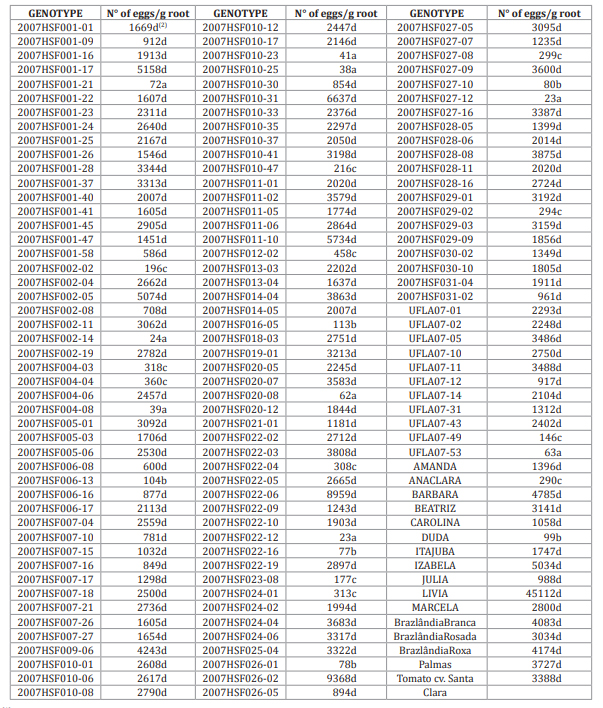Resistance to Meloidogyne enterolobii in sweet potatoes
Keywords:
Ipomoea batatas, plant breeding, reproduction index, root-knot nematodeAbstract
The present work was designed to select for sweet potatoes clones (Ipomoea batatas) resistant to Meloidogyne enterolobii (Syn. M. mayaguensis) as well as evaluate the efficiency of the selection methods used by estimating their genetic (VCg) and environmental (VCe) variation coefficients as well as broad sense heritability. A total of 142 sweet potato genotypes were tested, including four commercial varieties (Brazlândia Rosada, Brazlândia Roxa, Brazlândia Branca, and Palmas) as well as the Santa Clara tomato cultivar (utilized as a susceptibility standard). The experimental design was completely randomized blocks, in two repetitions of six plants each. Resistance levels were classified according to the numbers of eggs per gram of roots, the reproduction factor (RF), and the reproduction index (RI) relative to the Santa Clara tomato cultivar. The b= VCg/VCe ratio and broad sense heritability were high in terms of the numbers of eggs per gram of roots, as well as in terms of the reproduction factor and reproduction index, demonstrating the efficiency of the methodology used in the selection of resistant genotypes. Thirty-one sweet potato genotypes resistant to M. enterolobii were identified as having significant potential for continuing the breeding program.
Downloads

Downloads
Published
How to Cite
Issue
Section
License
Aquellos autores/as que tengan publicaciones con esta revista, aceptan las Políticas Editoriales.










.jpg)




